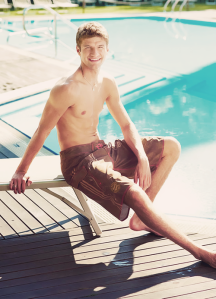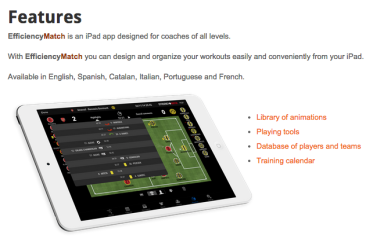
Left to right: Pique (6’4), Messi (5’6), Alves (5’8), Iniesta (5’7), and Xavi (5’7).
I remember attending my first competitive youth soccer tryout a few years back. One of the club directors was taking me through the plans for the day as I kept glancing over at the group of boys I was about to evaluate.
Sensing my nervousness he said, “Just find the best athletes and we will teach them how to play soccer.”
He was serious too.
And that is how the athlete debate starts. A coach or director says something like this, and then coaches like myself retort that it isn’t about the best athletes, but rather the best soccer players. And, yes, I do believe that.
But something gets lost in the debate:
I DO want athletes. In fact, I need them. Soccer at the highest level requires an amazing amount of athleticism.
Give me the pick of players who all have comparable touch, control, and soccer IQ and almost guaranteed that I pick the best athletes of the bunch. However, the higher those other qualities are (touch, control, IQ) and the less athleticism matters.
The issue lies in our idea of what constitutes an “athlete” and where we prioritize athleticism when identifying talent.
For most people, they define athleticism as “bigger, faster, and stronger.” This is not a great definition, as there is more to it than that.
Many in the US complain that we are losing our best athletes to other sports. We’ve all heard the typical, “if LeBron James played soccer the US would win a World Cup.” Really, you could place a dozen names into that sentence and I would give the same response: Ugh.
First of all, in a population of 300 million, I am pretty sure there are plenty of “athletes” to go around.
But let’s probe this one even further.

LeBron James
LeBron James is 6 ft 8 in and 250 lbs.
Let’s compare LeBron to a list of the world’s best soccer talents:
- Manuel Neuer -Bayern Munich/German GK – 6 ft 4 in and 203 lbs
- Marco Reus – Bayern Munich/German MF – 5 ft 11 in and 148 lbs
- Cristiano Ronaldo – Portugal/Real Madrid Fwd – 6 ft 1 in and 175 lbs
- Angel Di Maria – Man U/Argentine MF – 5 ft 10 in and 154 lbs
- Neymar – Barcelona/ Brazil Fwd – 5 ft 9 in and 143 lbs
The closest I can come to Lebron James status is:
- Thibaut Courtois – Belguim/Chelsea GK – 6 ft 7 in and 201 lbs
…and LeBron still has him by 50 lbs.
So what about the best player in the world (possibly greatest of all time)?
- Lionel Messi (Barcelona/ Argentina) is 5 ft 6 in and 148 lbs
What about the last two World Cup winning goal scorers (2010 and 2014)?
- Andres Iniesta (Barcelona/ Spain) 5 ft 6 in and 143 lbs
- Mario Gotze (Baryern Munich/ Germany) 5 ft 9 and 159 lbs
I’ll go out on a limb and say that if Lebron James grew up in Spain, he just might have ended up at a club like FC Barcelona, and he would have still have been a basketball player. If he did end up playing soccer he probably would have been a goalkeeper, and top notch goalkeepers is not exactly US Soccer’s biggest weakness.
So let’s agree to stop it with the “if LeBron James played soccer” nonsense.
I’m not trying to imply that the craques listed above are not athletes, because they absolutely are. But would they have stood out on a youth soccer field tryout as a kid if you were looking for the best athlete?
The idea that the US is not producing enough athletes to build a world class soccer team is ludicrous. In fact, many athletes that choose the other sports in US (Football, Basketball, Baseball) have stats well outside of this 5’6 to 5’9 and 150 lbs range. They are guys like LeBron James.
While the guys listed above ARE in fact great athletes, they were identified for their soccer talents first, not their athleticism, and that is the key. In the US we filter out the guys with great soccer IQ too early in the process, and this filtration continues through nearly every stage.
Just remember that at the 2014 World Cup this guy…

Thomas Muller
Out performed this guy…

Cristiano Ronaldo
And these two specimens each scored game willing goals in World Cup finals (2010 and 2014)…

Andres Iniesta (Spain, 2010)

Mario Gotze (Germany, 2014)
And no matter how you shake it, this guy is still a basketball player.

LeBron James
















